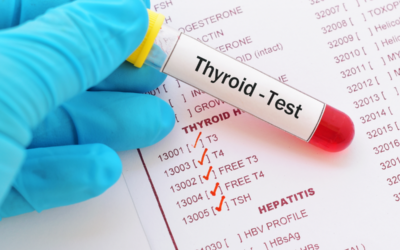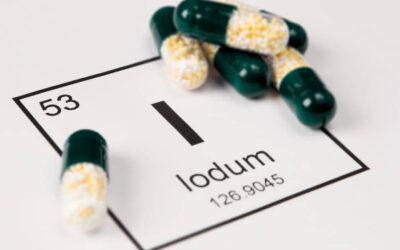Total or partial removal of the thyroid gland is a common surgery. This surgical procedure often makes patients worried, having many questions about how it is done and what could be the consequences.
All your questions about the causes of thyroid surgery, postoperative recovery and the course of the operation will all be answered in this article.
When is thyroid removal necessary ?
A total or partial removal of the thyroid gland may be necessary due to certain health conditions. Thyroid cancer or the existence of a goiter resulting in an enlarged thyroid gland are the most common causes of thyroidectomy. Basedow’s autoimmune disease also causes hyperthyroidism requiring thyroid gland removal. This intervention may also be necessary if a cancerous nodule is suspected and if there is a high risk of developing a thyroid cancer. A thyroidectomy may also be done to treat a benign nodule, which is usually larger than 25 millimeters, and causes difficulty in speaking, swallowing, or breathing.
An answer to the patients’ main questions
What are the possible side effects after thyroid removal ?
A total thyroidectomy results in insufficient production of the hormone needed to control the body’s metabolic processes. Also, right after the intervention, patients must take thyroid hormone replacement therapy. This treatment must be taken all along the patient’s life. Doctors also commonly add supplements to the initial treatment to balance calcium levels.
In the case of a partial removal of the thyroid that is also called a lobectomy or a lobo-isthmectomy, it is mandatory to check the level of thyroid hormones. If a deficiency or an imbalance is found, thyroid hormone replacement therapy may be prescribed.
Regardless of the type of ablation, it often happens that one feels pain after a thyroid operation. This occurs in the neck area. In fact, this is the most common side effect. The incision area can be painful for up to a week after the thyroid operation. In a third of cases, discomfort can be felt in the vocal cords. This means that a nerve was damaged during the surgery. As a result, the voice may become weaker, hoarse or broken.
Difficulty swallowing may also occur. These symptoms are usually temporary, but may persist for up to several weeks after the operation.
In case of swelling of the neck, it is urgent to contact your surgeon. Such a phenomenon could indicate the development of an infection.
Regarding the diet, it is strict on the day of the operation. However, it can return to normal very quickly, even the next day.
How long should one stay in hospital after thyroid surgery ?
The length of hospitalization is generally quite short after thyroid surgery. On average, hospitalization lasts two to three days. But many patients can go home the same day of the operation. However, a work stoppage of about two to three weeks is necessary to fully recover from thyroid surgery.
A thyroid surgery involves some constraints during convalescence. During the three weeks following thyroid surgery, you should refrain from lifting heavy loads or performing any task that could strain your neck. It is also advised to avoid soaking or rubbing the incision area for at least a week, to facilitate healing. Nevertheless, showering is most often possible the day after the thyroid operation.
In addition, regular health consultations are to be expected after thyroid surgery. A thyroid gland removal surgery leads to disruption of the parathyroid glands, which regulate the balance of calcium. It therefore happens that the calcium level drops considerably, following the removal of the thyroid gland. This can hence cause numbness and tingling in the fingers and around the mouth. Hypocalcaemia, i.e. the drop in calcium in the blood, concerns half of the patients. This is why the medical team monitors the calcium level of the patient by performing blood tests. Taking a calcium substitute may sometimes be necessary.
Is it possible to have weight fluctuations following thyroid cancer ?
Surgery done to treat thyroid cancer can cause weight gain. This is also the case after non-surgical treatment of hyperthyroidism. This weight fluctuation is the result of disruption or cessation of thyroid hormone production.
However, taking replacement thyroid hormones can rebalance the body. Finding the right dosage of thyroid replacement hormones can take time. But once the body is stabilized, it is rare to see significant weight gain or loss.
Thyroid gland removal : the procedure
In the majority of cases, thyroid surgery is not urgent. It is therefore possible to program the day and time of the thyroidectomy. Before the day of the operation, a preoperative consultation with members of the medical team is mandatory. This appointment includes blood tests, X-rays, an electrocardiogram and any other imaging tests deemed necessary.
In addition, the medical team gives specific instructions regarding when to stop eating, drinking and taking medication in preparation for the operation. Indeed, it is essential to have an empty stomach before anesthesia. In general, it is essential to follow the instructions of the medical team to the letter. A breach of one of the rules enacted can lead to the cancellation of the thyroidectomy.
Thyroid surgery takes place under general anesthesia and lasts between 40 minutes and 1h30. The surgeon then makes a horizontal incision of 4 to 8 centimeters at the base of the neck, through a thin layer of muscle. This helps get access to the thyroid gland and the Doctor can thus proceed to the total or partial ablation of the lobes. Once the removal is complete, the surgeon repositions the muscles and fixes them.
Thyroid surgery requires extreme rigor because the parathyroid glands are often difficult to identify. Certain tools make the surgical gesture more precise, like the advantages of the Fluobeam® LX device which makes the operation safer by allowing precise visualization, in real time, of the parathyroid glands and the blood flow which passes through them. The surgical procedure is thus more precise and the risk of injury during the operation is limited. In addition, the surgeon can ensure the perfect revascularization of the parathyroid glands after the ablation.
The scar left after a thyroidectomy is as discreet as possible. During the three weeks of convalescence, it will harden and turn pink. The skin will then gradually soften in the weeks and months that follow. A suitable moisturizer can be proposed to soften the skin.
Good to know
In France, 45,000 people undergo total or partial removal of the thyroid each year.
Thyroid surgery scares off most people who need to have it. However, the total or partial removal of the thyroid has become a common act. Thanks to good medical care before and after the operation and regular follow-up, patients can resume an almost normal life following thyroidectomy.




